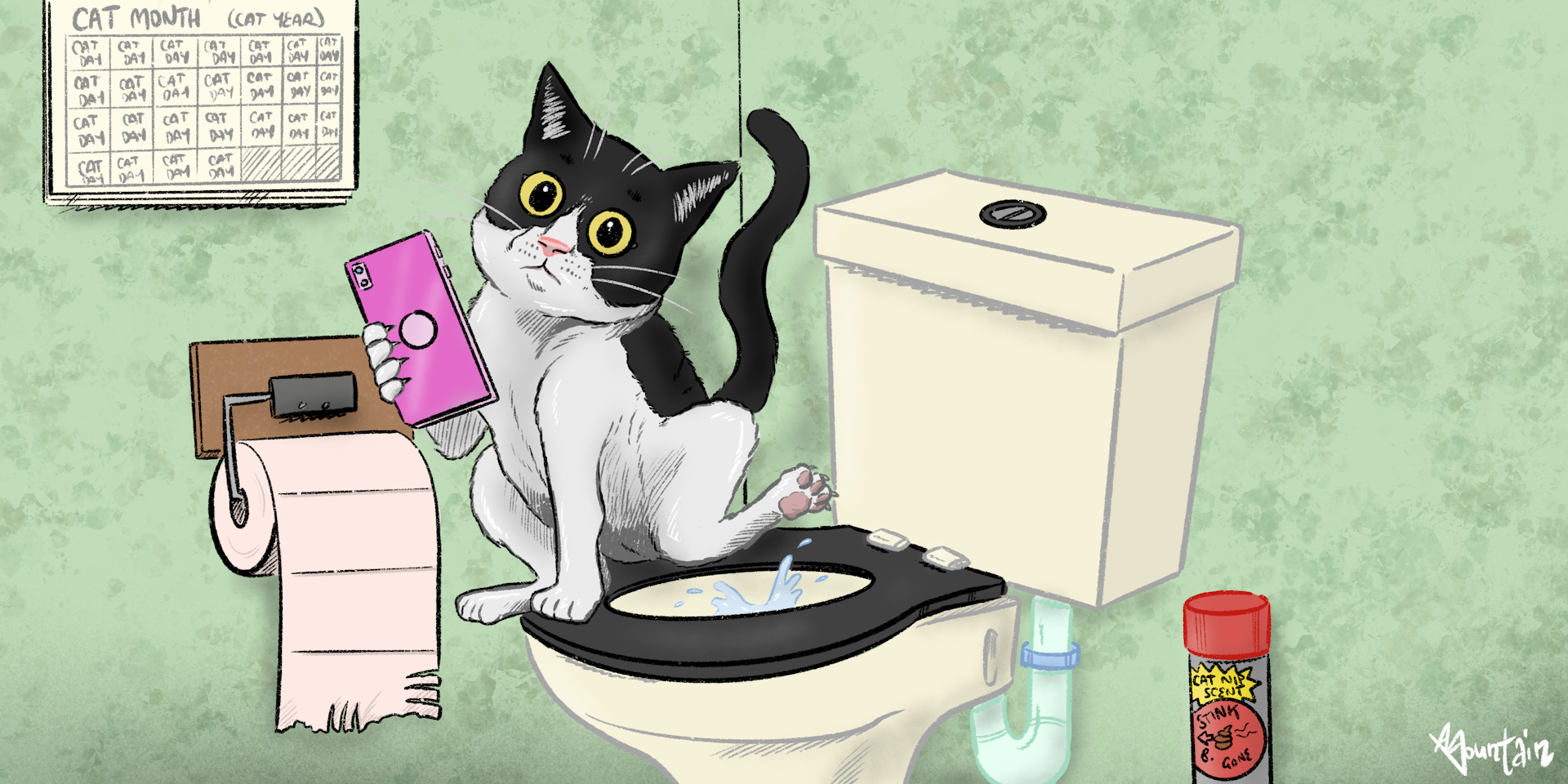In this article down the page you'll find a bunch of brilliant insight in relation to Don’t flush cat feces down the toilet.

Intro
As cat owners, it's necessary to be mindful of exactly how we take care of our feline friends' waste. While it might appear convenient to flush cat poop down the bathroom, this practice can have harmful repercussions for both the atmosphere and human health.
Alternatives to Flushing
Fortunately, there are more secure and extra accountable methods to throw away pet cat poop. Take into consideration the complying with alternatives:
1. Scoop and Dispose in Trash
One of the most common approach of taking care of feline poop is to scoop it right into a biodegradable bag and toss it in the garbage. Be sure to use a committed litter inside story and take care of the waste promptly.
2. Usage Biodegradable Litter
Opt for naturally degradable pet cat litter made from materials such as corn or wheat. These clutters are eco-friendly and can be safely taken care of in the garbage.
3. Hide in the Yard
If you have a lawn, consider burying pet cat waste in an assigned location away from veggie yards and water resources. Make certain to dig deep enough to avoid contamination of groundwater.
4. Mount a Pet Waste Disposal System
Invest in a pet garbage disposal system particularly created for feline waste. These systems utilize enzymes to break down the waste, minimizing smell and environmental influence.
Health and wellness Risks
Along with ecological issues, flushing cat waste can likewise pose health risks to people. Feline feces may have Toxoplasma gondii, a bloodsucker that can trigger toxoplasmosis-- a possibly serious illness, especially for pregnant women and individuals with damaged body immune systems.
Environmental Impact
Flushing cat poop introduces unsafe virus and bloodsuckers into the water, positioning a considerable danger to aquatic ecosystems. These pollutants can adversely affect marine life and compromise water top quality.
Final thought
Accountable family pet ownership prolongs beyond providing food and shelter-- it additionally includes appropriate waste monitoring. By avoiding purging feline poop down the toilet and going with alternative disposal techniques, we can lessen our environmental footprint and secure human health and wellness.
Why Can’t I Flush Cat Poop?
It Spreads a Parasite
Cats are frequently infected with a parasite called toxoplasma gondii. The parasite causes an infection called toxoplasmosis. It is usually harmless to cats. The parasite only uses cat poop as a host for its eggs. Otherwise, the cat’s immune system usually keeps the infection at low enough levels to maintain its own health. But it does not stop the develop of eggs. These eggs are tiny and surprisingly tough. They may survive for a year before they begin to grow. But that’s the problem.
Our wastewater system is not designed to deal with toxoplasmosis eggs. Instead, most eggs will flush from your toilet into sewers and wastewater management plants. After the sewage is treated for many other harmful things in it, it is typically released into local rivers, lakes, or oceans. Here, the toxoplasmosis eggs can find new hosts, including starfish, crabs, otters, and many other wildlife. For many, this is a significant risk to their health. Toxoplasmosis can also end up infecting water sources that are important for agriculture, which means our deer, pigs, and sheep can get infected too.
Is There Risk to Humans?
There can be a risk to human life from flushing cat poop down the toilet. If you do so, the parasites from your cat’s poop can end up in shellfish, game animals, or livestock. If this meat is then served raw or undercooked, the people who eat it can get sick.
In fact, according to the CDC, 40 million people in the United States are infected with toxoplasma gondii. They get it from exposure to infected seafood, or from some kind of cat poop contamination, like drinking from a stream that is contaminated or touching anything that has come into contact with cat poop. That includes just cleaning a cat litter box.
Most people who get infected with these parasites will not develop any symptoms. However, for pregnant women or for those with compromised immune systems, the parasite can cause severe health problems.
How to Handle Cat Poop
The best way to handle cat poop is actually to clean the box more often. The eggs that the parasite sheds will not become active until one to five days after the cat poops. That means that if you clean daily, you’re much less likely to come into direct contact with infectious eggs.
That said, always dispose of cat poop in the garbage and not down the toilet. Wash your hands before and after you clean the litter box, and bring the bag of poop right outside to your garbage bins.
https://trenchlesssolutionsusa.com/why-cant-i-flush-cat-poop/

Hopefully you enjoyed reading our article about How to Dispose of Cat Poop and Litter Without Plastic Bags. Thanks for taking time to read through our short article. Are you aware of somebody else who is involved in the topic? Take a moment to share it. Kudos for your time. Kindly stop by our blog back soon.
View More
Comments on “Avoid Flush Cat Poop Down Your Toilet - Safeguard Your Pipes Infrastructure”